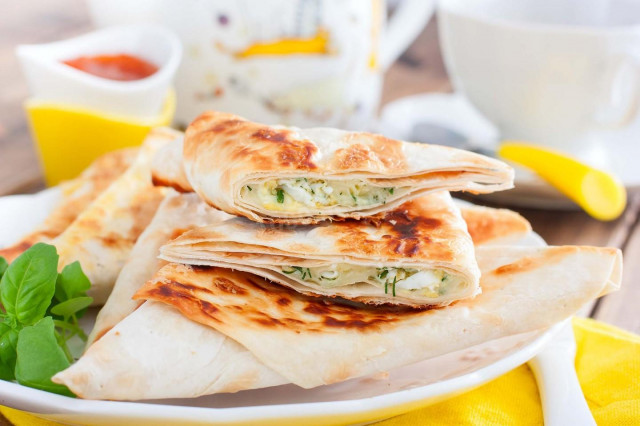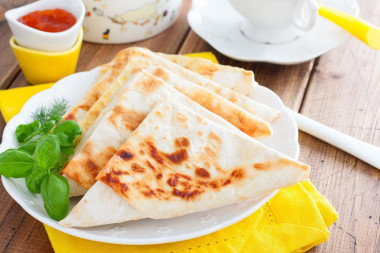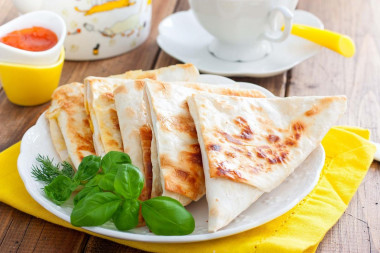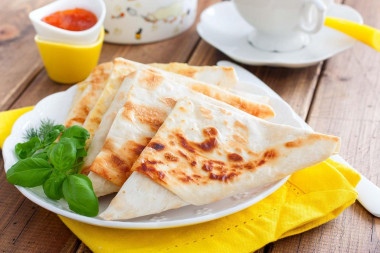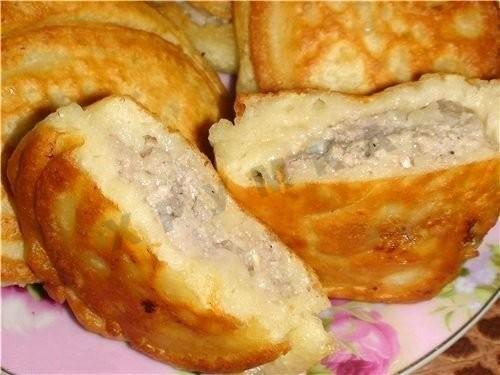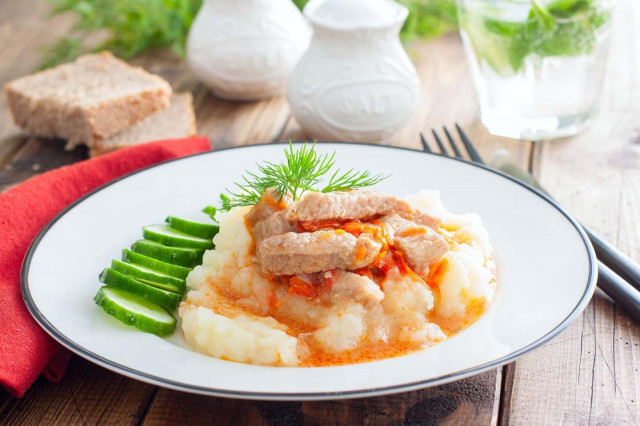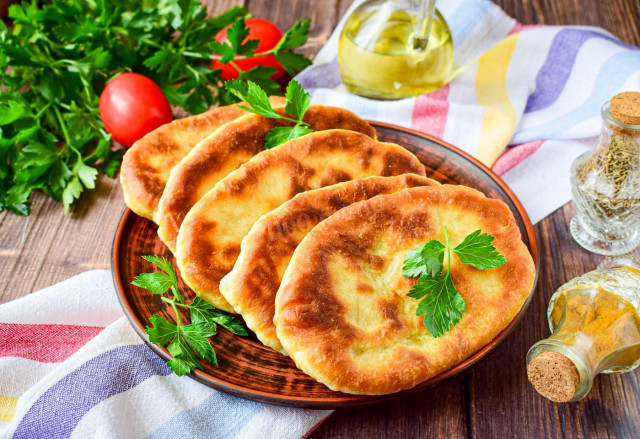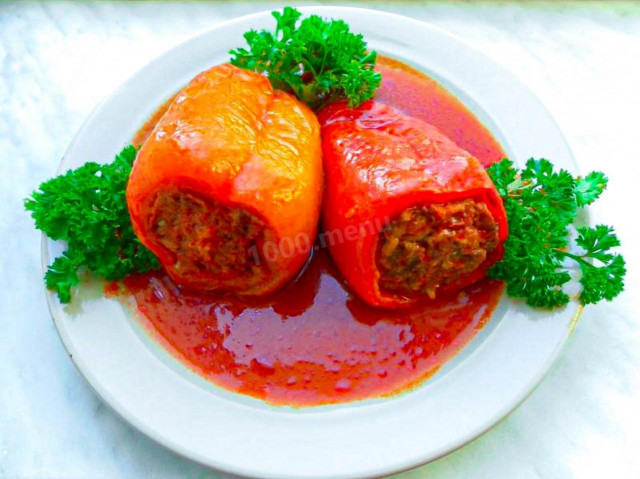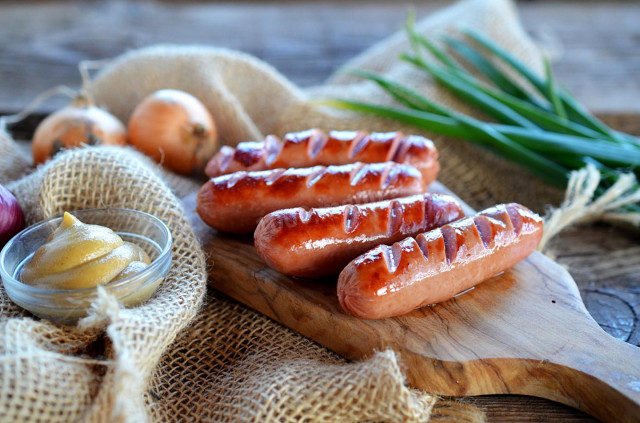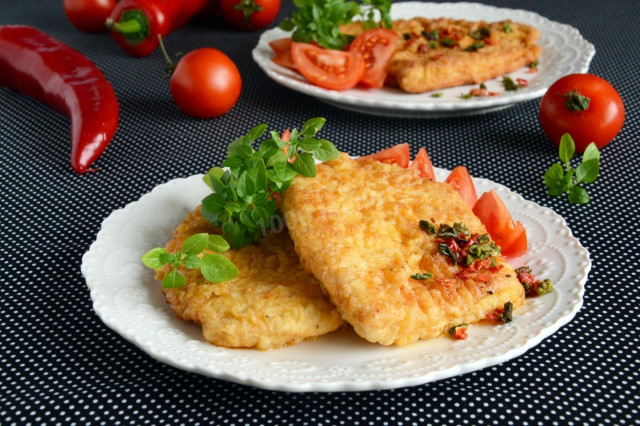Composition / ingredients
Step-by-step cooking
Step 1:
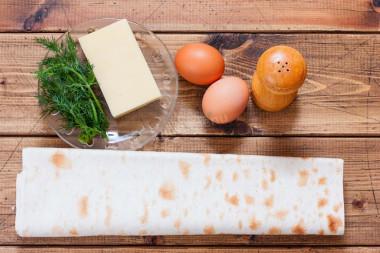
Prepare the specified ingredients for cooking. Pita bread needs thin wheat, which will bend easily and will not crumble at the same time. You can take any cheese to taste. I take fresh dill greens, but you can take parsley or a mixture of parsley and dill. Eggs need to be boiled beforehand: put the eggs in cold water, put on fire and cook at a moderate boil for about 10 minutes, then cool the eggs in cold water.
Step 2:
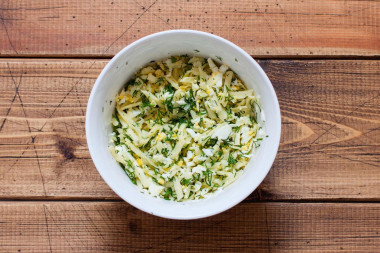
Pre-boiled and cooled eggs, peel from the shell and grate on a medium grater. Remove the cheese from the package and grate it on a coarse grater. Rinse fresh dill greens under running cold water, drain and finely chop. In a deep bowl, mix the grated eggs, cheese and chopped dill. If necessary (if the cheese is not very salty), add salt to the mixture.
Step 3:
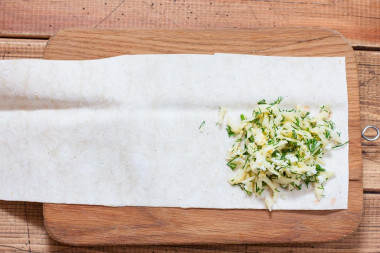
Spread out the pita bread sheets on the table and cut into strips. Put the filling on the edges of the pita bread strip.
Step 4:
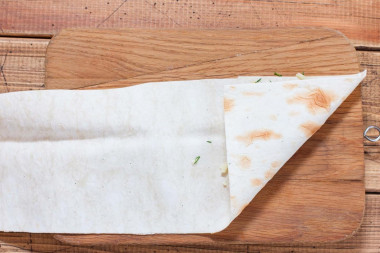
Bend the edge to form a triangle. Folding the entire length of the pita bread in the form of a triangle, hide the filling in the pita bread.
Step 5:
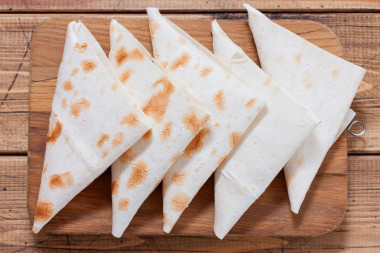
Neat tight triangles are obtained that hold the filling well inside. You can fold lavash arbitrarily - with tubes, envelopes or triangles.
Step 6:
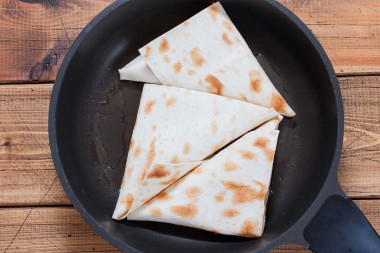
Put the frying pan on medium heat, pour vegetable oil (in parts) and warm up. Put a few envelopes in a frying pan and fry on both sides until golden brown.
Step 7:
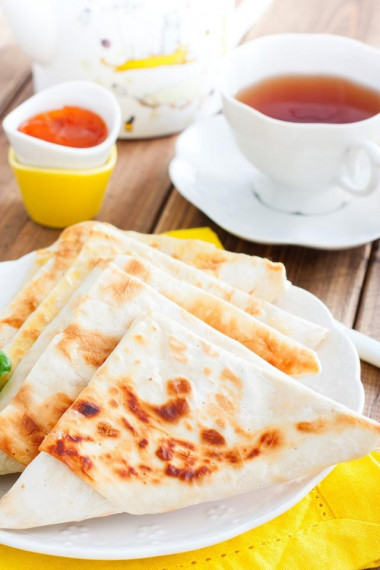
Ready-made pita bread sandwiches with cheese to serve hot or chilled. Prepared for breakfast, such envelopes will brighten it up a lot.
Pita bread sandwiches turned out very tasty, with a crispy crust and melted cheese inside. Such sandwiches can be very successfully served for breakfast or taken with you to work or on the road - they securely hold the filling inside. The only thing, they seemed a little dry to me. I think it's because of the selected cheese. To avoid this, I think you can put a softer cheese in the filling or add sour cream or mayonnaise for a more delicate consistency.
Caloric content of the products possible in the composition of the dish
- Chicken egg - 157 kcal/100g
- Egg white - 45 kcal/100g
- Egg powder - 542 kcal/100g
- Egg yolk - 352 kcal/100g
- Ostrich egg - 118 kcal/100g
- Dutch cheese - 352 kcal/100g
- Swiss cheese - 335 kcal/100g
- Russian cheese - 366 kcal/100g
- Kostroma cheese - 345 kcal/100g
- Yaroslavsky cheese - 361 kcal/100g
- Altai cheese 50% fat content - 356 kcal/100g
- Soviet cheese - 400 kcal/100g
- Cheese "steppe" - 362 kcal/100g
- Uglich cheese - 347 kcal/100g
- Poshekhonsky cheese - 350 kcal/100g
- Lambert cheese - 377 kcal/100g
- Appnzeller cheese with 50% fat content - 400 kcal/100g
- Chester cheese with 50% fat content - 363 kcal/100g
- Edamer cheese with 40% fat content - 340 kcal/100g
- Cheese with mushrooms of 50% fat content - 395 kcal/100g
- Emmental cheese with 45% fat content - 420 kcal/100g
- Gouda cheese with 45% fat content - 356 kcal/100g
- Aiadeus cheese - 364 kcal/100g
- Dom blanc cheese (semi-hard) - 360 kcal/100g
- Lo spalmino cheese - 61 kcal/100g
- Cheese "etorki" (sheep, hard) - 401 kcal/100g
- White cheese - 100 kcal/100g
- Fat yellow cheese - 260 kcal/100g
- Altai cheese - 355 kcal/100g
- Kaunas cheese - 355 kcal/100g
- Latvian cheese - 316 kcal/100g
- Limburger cheese - 327 kcal/100g
- Lithuanian cheese - 250 kcal/100g
- Lake cheese - 350 kcal/100g
- Gruyere cheese - 396 kcal/100g
- Dill greens - 38 kcal/100g
- Vegetable oil - 873 kcal/100g
- Armenian lavash - 236 kcal/100g
- Lavash - 277 kcal/100g
- Salt - 0 kcal/100g

